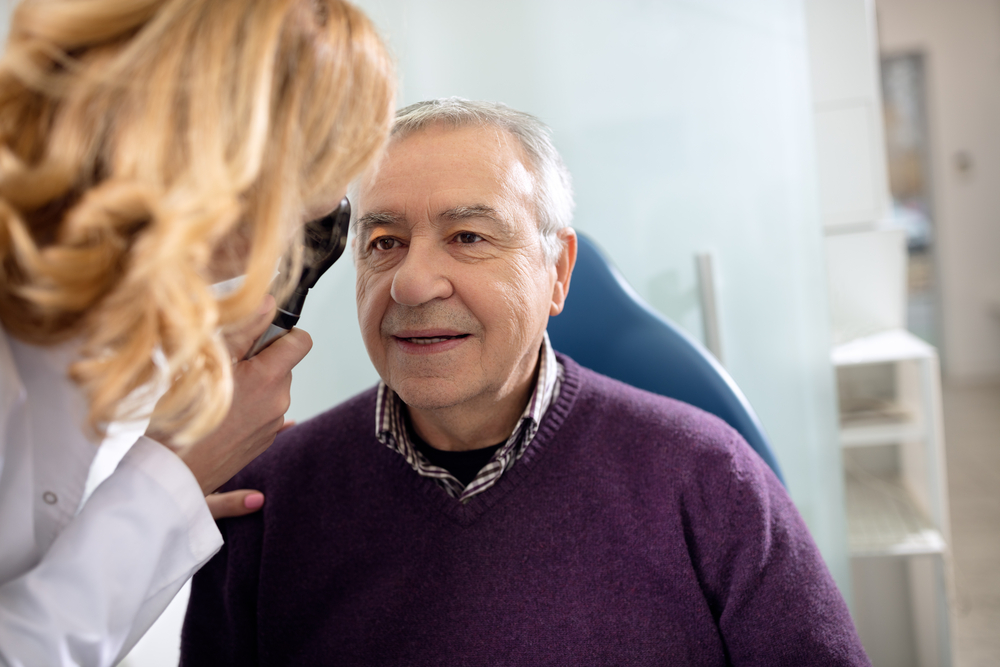
Your eyes are constantly working to maintain the perfect balance of fluid pressure to keep your vision clear and your eye structure healthy. Sometimes, this delicate balance gets disrupted, leading to a condition called ocular hypertension.
However, understanding what ocular hypertension is and how it’s managed can help you take proactive steps to protect your vision.
What is Ocular Hypertension?
Ocular hypertension occurs when the pressure inside your eye, known as intraocular pressure (IOP), rises above normal levels. This condition is distinct from glaucoma, another eye condition that is characterized by high IOP.
With ocular hypertension, your optic nerve remains healthy, and your vision stays normal, while glaucoma patients experience optic nerve damage that can lead to irreversible vision loss. However, this condition does put you at increased risk for developing glaucoma, which is why people with ocular hypertension are often referred to as “glaucoma suspects.”
Does Ocular Hypertension Have Symptoms?
One of the most challenging aspects of ocular hypertension is that it typically produces no noticeable symptoms. You won’t experience pain, vision changes, or any other warning signs that something is wrong.
This silent nature is precisely why regular comprehensive eye exams are so crucial, especially as you age. Your eye doctor can detect elevated eye pressure during routine testing, often before any damage occurs.
What Causes Ocular Hypertension?
To understand ocular hypertension, it helps to know how your eye normally maintains its pressure. Your eye continuously produces a clear fluid called aqueous humor, which flows through the front part of your eye, providing nutrients and removing waste.
Under normal circumstances, this fluid drains out of your eye at the same rate it’s produced, maintaining steady, healthy pressure. Ocular hypertension develops when this drainage system doesn’t work properly.
The aqueous humor may not flow out of the eye as efficiently as it should, causing pressure to build up. Several factors can interfere with this drainage process, including inflammation within the eye, blockages in the drainage channels, or structural changes that prevent normal fluid outflow.
How is Ocular Hypertension Diagnosed?
Diagnosing ocular hypertension requires specialized testing that your eye doctor performs during a comprehensive eye exam. The primary test is called tonometry, which measures the pressure inside your eye.
Your eye doctor may also measure your corneal thickness using an instrument called a pachymeter. This quick, simple test helps determine your risk for developing glaucoma, as corneal thickness can influence pressure readings and glaucoma risk.
Additionally, your eye doctor will carefully examine your optic nerve and test your peripheral vision to ensure no glaucoma damage has occurred. These tests help distinguish between ocular hypertension and glaucoma.
Treatment Options and Ocular Hypertension Management
The good news is that ocular hypertension can typically be effectively managed, significantly reducing your risk of developing glaucoma. However, not everyone with ocular hypertension requires immediate treatment.
Your eye doctor will assess your individual risk factors to determine whether treatment is necessary right away or if careful monitoring is more appropriate. If your eye pressure is only slightly elevated and you have few other risk factors, your doctor might recommend regular monitoring instead of immediate treatment.
This approach involves frequent check-ups to ensure your condition remains stable. When treatment is recommended, prescription eye drops are typically the first line of defense.
These medications work in different ways to lower eye pressure, either by reducing the production of aqueous humor or by improving its drainage from the eye. In cases where eye drops aren’t sufficient, laser procedures or surgery might be considered to improve fluid drainage and lower eye pressure.
Taking Control of Your Eye Health
While ocular hypertension cannot be completely prevented, you can take steps to protect your overall eye health. Maintain regular eye exams, especially if you’re over 40 or have risk factors for eye conditions like glaucoma.
Follow your eye doctor’s treatment recommendations carefully if you’re prescribed eye drops, and don’t hesitate to ask questions about your condition and treatment options. With proper care and monitoring, many patients with ocular hypertension maintain excellent vision and eye health for years to come.
Do you remember when you had your last eye exam? If not, it’s time to schedule an appointment at Metro Eye Care in Paramus, NJ, today!
